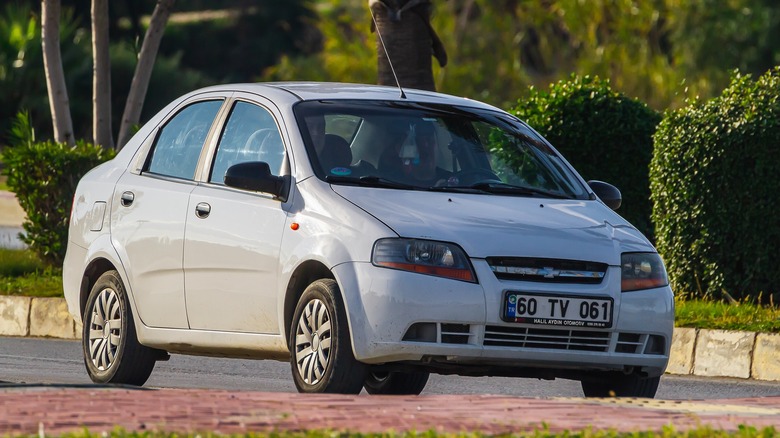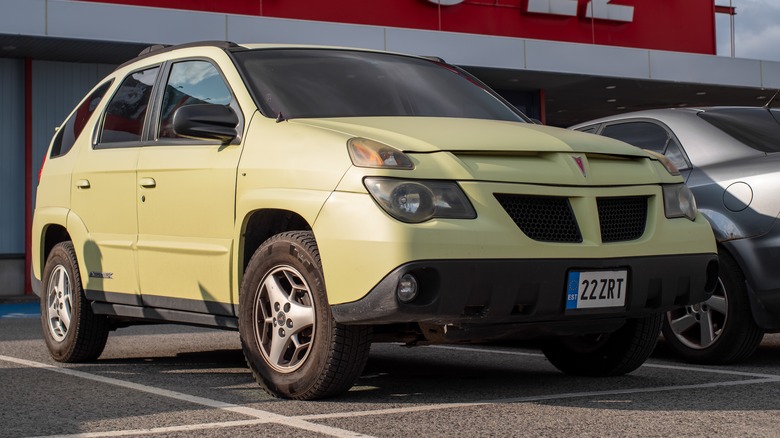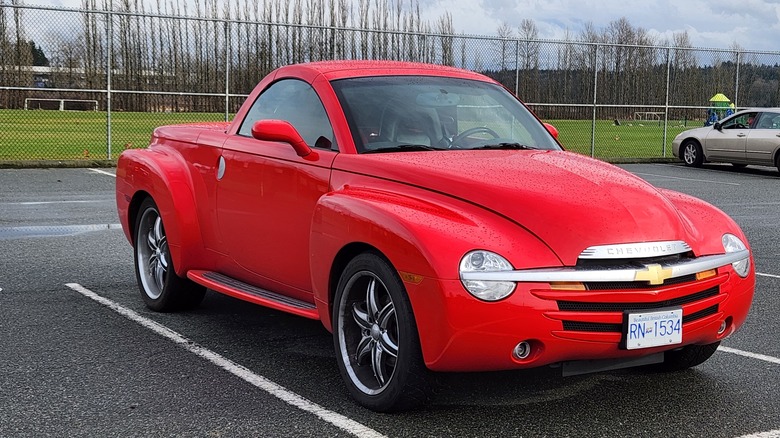3 Of The Worst Cars Built In The 2000s
The '90s was a radical period for the automotive industry, with cars like the Dodge Viper and Plymouth Prowler serving up eccentric and ultra-daring designs. Looking at their distinct styles, one could say manufacturers took bold experimentation to the next level as the century was coming to an end. When the 21st century arrived, many manufacturers began emphasizing practicality, versatility, and comfort, giving way to the rise of SUVs. But while the new millennium largely ushered in a more cautious design era marked by softer lines and rounded shapes, there were still a handful of questionable and downright regrettable releases.
Some appeared to be obvious attempts at trying to do something different. Others were clearly born out of marketing strategies to revive retro aesthetics and merge them with more modern elements, only to end up being half-hearted throwbacks. Even worse were the models that wanted to push the envelope to extremes, causing questionable decisions in both engineering and design along the way. Without further ado, here are some of the worst cars built and released in the 2000s.
Chevrolet Aveo
The Chevrolet Aveo, which debuted in 2004, left much to be desired from the day it was released until the time it was discontinued in 2011. To say that it was bland would be generous for this model, especially the earlier versions prior to the 2008 facelift. Even then, the revamp did nothing to extend its longevity in the market. The model raked in lackluster sales figures throughout its run despite the popularity of tiny cars in the early 2000s.
GM had purchased the failing Korean automaker Daewoo in 2002 and re-badged its compact Kalos as the Aveo. The best thing about the Aveo was its base price of just under $10,000 (about $17,000 today), but the quality of construction — especially inside the car — reflected the bargain price. Given its small size, the Aveo was able to provide decent fuel economy of 30 miles per gallon in mixed city and highway driving but still lagged behind competitors like the Hyundai Accent, Honda Fit, and Kia Rio in terms of styling, performance, and reliability. The cheap interior was not that surprising for a Chevrolet vehicle, and the Aveo never caught on with buyers. It was also not terribly safe in a crash, scoring only two stars out of five for adult occupant protection in Europe's New Car Assessment Program (Euro NCAP) testing.
Pontiac Aztek
SlashGear has already featured the Pontiac Aztek on our lists of the strangest cars made in the 2000s and the worst-looking cars ever designed. When it first launched in 2001, the Aztek was enticing to some because of innovative accessories and features like a trunk-mounted tent. However, its design made it the butt of many jokes, and it's easy to see why. The strange split glass panels on the rear hatch alone could make anyone question what the engineers were thinking while designing the car.
Overall, the criticisms of the Aztek were so harsh that it was widely regarded as a complete failure for General Motors. There were so many gripes with how the Aztek looked from the moment it was revealed to the public at the 1999 Detroit Auto Show that expectations were already low when it hit dealerships the following year. The Aztek peaked in terms of sales in 2002 at 27,793 units. By 2005, sales had dipped to just over 5,000 units, and GM discontinued the model.
Chevrolet SSR
Aside from being one of the strangest cars made in the 2000s, the Chevrolet SSR — Super Sports Roadster — is also one of the worst automotive designs of the period. It wasn't horribly unreliable or dangerously flawed, but it completely missed the mark on delivering the kind of vehicle consumers actually wanted. Chevy obviously tried to combine retro styling, convertible flair, and pickup truck practicality with the SSR without thinking things through, and the end result was a total disaster. In trying to combine these three very disparate elements, the SSR failed to deliver on any of them. It went into production in mid-2003 after being introduced as a concept at the 2000 Detroit Auto Show, but missed the mark from the start.
The SSR could not perform as a pickup due to its small bed and woeful towing capacity of just 2,500 pounds. The puny payload capacity of just 1,290 pounds was also out of proportion to the nearly 5,000-pound curb weight, which made its 5.3-liter V8 engine seem sluggish. A bigger 6.0-liter engine borrowed from the Corvette and Pontiac GTO came in 2005, but the SSR's version made 10 fewer horsepower. The SSR indeed had retro elements, but design made it look silly on the road, especially next to its contemporary rival trucks. The hefty $43,180 price tag in 2005 (over $70,000 today) also made it unpopular with buyers. Chevrolet only sold about 24,000 SSRs in four years, never moving more than 9,000 in a single year. Today, the Chevy SSR is considered a notorious flop.



